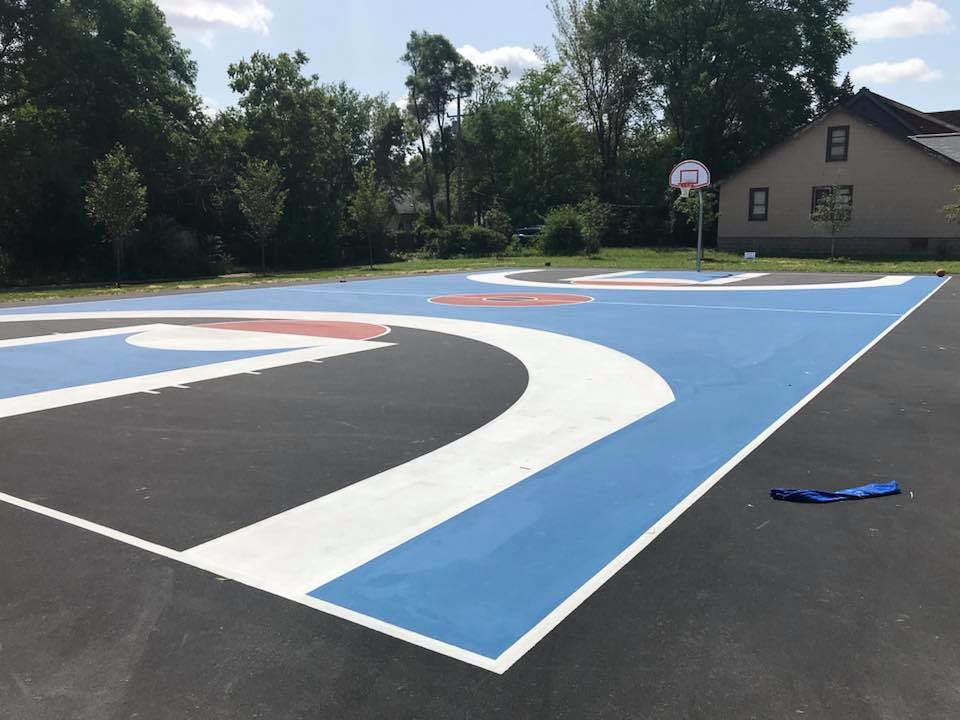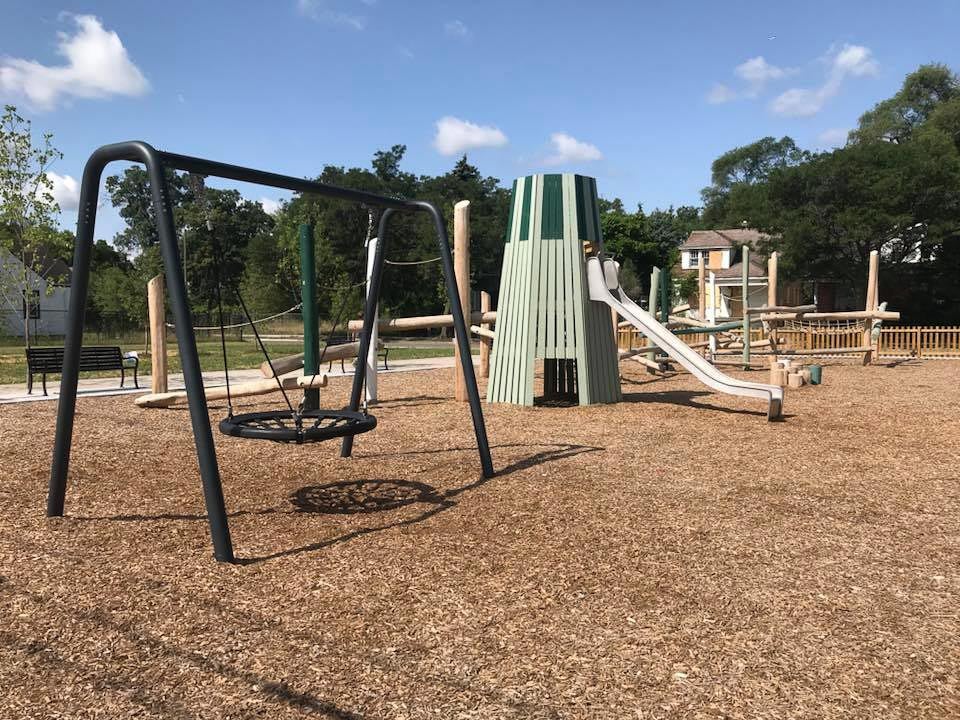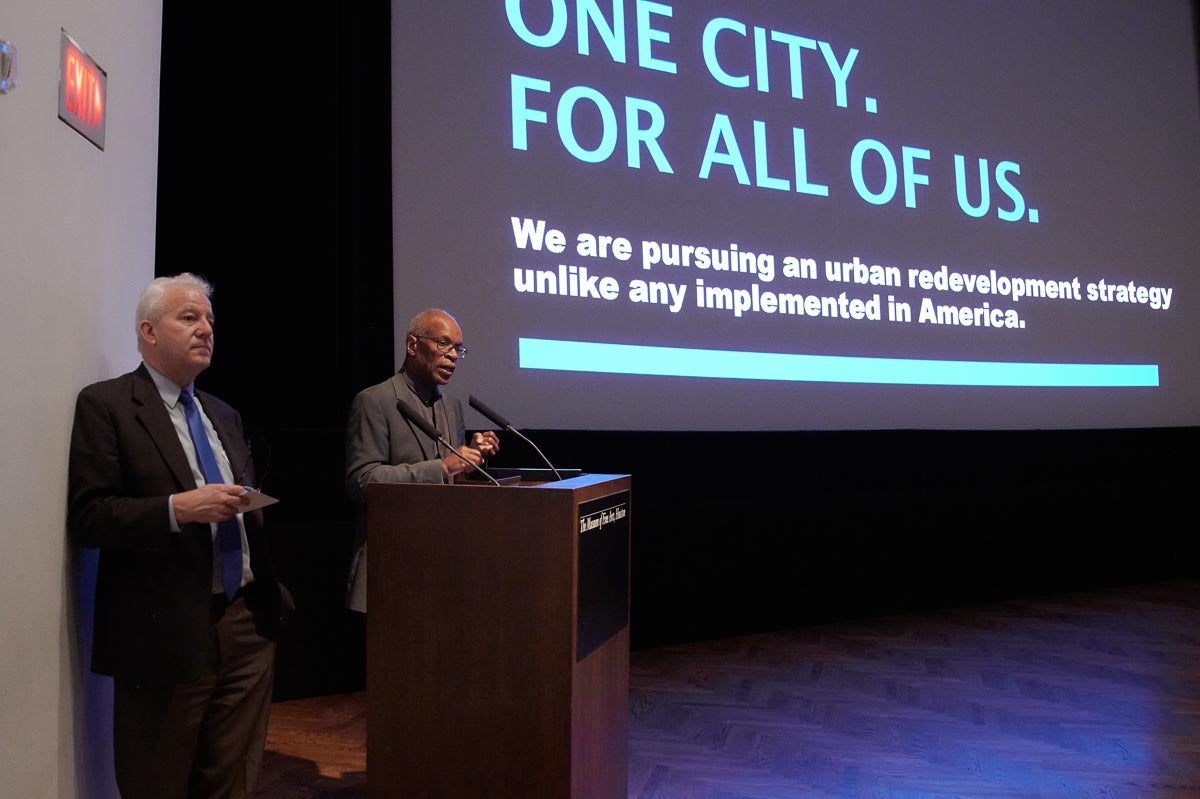For the past four years, Detroit's director of planning and development, Maurice Cox, has been making radical changes to the once-bankrupt Midwest city with a particular focus on creating a city that's equitble for all residents.
In 1950, during the auto industry boom, Detroit had about 1.8 million people and was the fifth largest city in America. After the bailout of the auto industry during the 2008 Recession and the city's bankruptcy in 2012, that population has dropped to about 673,000 people. Over seven decades, more than 1.1 million people fled Detroit.
Due to this population fleeing the city over the decades, the once-occuped homes of the Motor City have become vacant and the public owns more than 24 square miles of fallow land, 26,000 vacant homes that "need to be demolished," about 5,000 vacant homes that can be renovated and sold, and about 80,000 vacant properties owned by the land bank.
With all this extra space, Cox says he and his team have the space to experiment. "A city that controls its land, controls its future," Cox said. "So we are able to test ideas and understand what we have to retain in public trust and what we can dispose of."
But the ultimate goal of Cox and his city planning team — which he's grown from six employees to 36 in four years — is to create a new Detroit that has the ultimate goal of equity for all residents.
"What does it mean to be eqitable?" Cox said. In 2015 when he first arrived to Detroit, he asked his team of city planners what equity meant to them. "The things that rose to the top had to do with access. Access to opportunity, access to excellence, acess to public space and also the questions of urban justice." Others qualities mentioned included inclusion and belonging, civic participation, fairness, honesty and stewardship.
To do this, Cox said the city must "address very publicly issues of displacement, acknowledge racial tensions, housing disparities, blight and abandonment, and for many many years, the absense of government — the lack of capacity to be important to the transformation. And the littony of social and political ills that plagued the city. And lastly the media slander, which was a national campaign."
From there, Cox's team's motto has been that "every citizen has a right to live in a socially, economically and environmentally well-designed community." Cox said, "So just as we have invisioned the birth right to have access to vote or public education, we are trying to embrace the right of public health."
To achieve this, the planning department has several strategies, but focuses on neighborhoods, because "until you have created a recovery in the neighborhoods, you really haven't recovered at all," he said.
His team focuses on 14 neighborhoods that are the most populated areas of Detroit and have "good urban bones," which can be seen in the photo below.

Photo: Rose Rougeau
Within each neighborhood, Cox's team plans to invest in the streets, parks, greenways and development in order to revamp the city through the neighborhoods. The city already has plans to invest in 24 miles of streets to make them walkable, bikable and commercial-friendly and has used public land to create new city parks and gardens.
A specific example Cox highlighted is the Livernois-McNichols neighborhood. The neighborhood is seven miles from downtown and is sandwiched between Marygrove College and University of Detroit Mercy. Cox's team focused on the lowest-income portion of the neighborhood to revitalize it through a greenway connecting the two universities, renovating 100 vacant homes, pairing these homes with vacant land next door and replacing that land with flowering meadows or urban gardens. Cox's team also plans to add a commercial corridor and a park centralized in the neighborhood.
The park — named after Ella Fitzgerald — opened in July 2018 and has subtle equality cues that make a difference, Cox said.
"This was the first full-sized basketball court that the city built recently because they had gotten into the habit of only building half-sized courts so that they would not promote any kind of rivalry amongst young people," Cox said. "So the young people in Fitzgerald actually understood that the city was for them when the city actually built a full-sized court. We'd never think that these subtle signs of belonging and that you're welcome could be picked up by young people."


Furthermore, Cox's team's future plans for the Brush Park and Eastern Market neighborhoods to be developed into residential corridors for the Islandview/Greater Villiages area. "We have basically said these are our growth areas. These are the cooridors that will have public investment and we want the multi-family, higher-density to go here. If you choose to do it outside of here, you're not going to get any public funding."
The plan is to have varying levels of affordability in the area in order for the area to be a truely mixed-income, equitable and inclusive neighborhood. "The result is five different typologies that integrate units as small as 800 square feet on the same block as houses that are 3,000 square feet," Cox said. Additionally, the city has committed to preserve 10,000 affordable housing units and create 2,000 new affordable housing units.
To come to the final plan of the two examples mentioned above, Cox said extensive community outreach was included in order to get the public's opinion and vision for the future of their community.
"We socialize all of these designs with residents in different forms, whether it's exhibitions, whether it's interactive workshops, whether it's focus groups," Cox said. "When we have a converstation about their neighborhood and we're talking about the power of design... we're facilitating their discussion about the future of their neighborhood." Just in 2018, the planning department hosted over 200 planning meetings for communities across Detroit.
"Detroit is trying to do something that is asspirational and that is to build one city for all of us," Cox said. "A city that is welcoming all those who left over the past half century." And for all who may move there in the future.
To watch Cox's full presentation, you can watch the full video on our Facebook page, here.
Furthermore, Cox's team's future plans for the Brush Park and Eastern Market neighborhoods to be developed into residential corridors for the Islandview/Greater Villiages area. "We have basically said these are our growth areas. These are the cooridors that will have public investment and we want the multi-family, higher-density to go here. If you choose to do it outside of here, you're not going to get any public funding."
The plan is to have varying levels of affordability in the area in order for the area to be a truely mixed-income, equitable and inclusive neighborhood. "The result is five different typologies that integrate units as small as 800 square feet on the same block as houses that are 3,000 square feet," Cox said. Additionally, the city has committed to preserve 10,000 affordable housing units and create 2,000 new affordable housing units.
To come to the final plan of the two examples mentioned above, Cox said extensive community outreach was included in order to get the public's opinion and vision for the future of their community.
"We socialize all of these designs with residents in different forms, whether it's exhibitions, whether it's interactive workshops, whether it's focus groups," Cox said. "When we have a converstation about their neighborhood and we're talking about the power of design... we're facilitating their discussion about the future of their neighborhood." Just in 2018, the planning department hosted over 200 planning meetings for communities across Detroit.
"Detroit is trying to do something that is asspirational and that is to build one city for all of us," Cox said. "A city that is welcoming all those who left over the past half century." And for all who may move there in the future.
To watch Cox's full presentation, you can watch the full video on our Facebook page, here.

